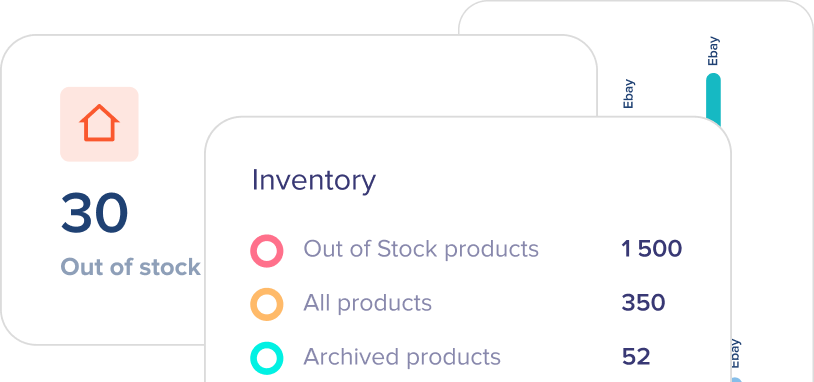Investopedia defines the just-in-time (JIT) inventory management strategy as a system that arranges raw materials, finished goods, and other types of inventory with production or retail schedules. The main initiatives of applying just-in-time inventory management methods are to decrease the potential waste and extra costs and increase the effectiveness of stock control processes. The key to the successful adoption of the JIT method is the accuracy of forecasting.

Just-in-time method history and background
The just-in-time management model originated in Japan and is more management philosophy than a technique. It is in Japanese manufacturing organizations since the early 1970s. The very first developments and application of the model belong to Taiichi Ohno in the plants of Toyota. The primary purpose was to meet customer demands with minimum possible delays. Just-in-time manufacturing increased the organization’s competitiveness through waste reduction, quality improvements, and increased production efficiency.

JIT inventory management can significantly enhance a business’s return on investment by cutting inventory carrying costs, improving efficiency, and reducing waste. With JIT inventory management, you will be able to reduce waste and avoid overordering. With this strategy, you will also decrease the possibility of deadstock. In other words, you will reduce the danger of inventory going unsold and occupying place in the warehouse.
How to enhance inventory management?
When it comes to your inventory’s overall inventory management system, you may consider the following tips.
Divide your stock into categories.
Sorting your items into groups might help you determine which ones need to be reordered frequently and how quickly they go out of stock. It is essential to understand that such an approach will help you save valuable resources and focus on more profitable items.
You may sort your inventory into multiple divisions based on turnover and profitability to optimize your inventory dollars and enhance efficiency. For instance, you can separate low-cost products that sell quickly from items that are high-priced and take the longest to sell. It is crucial to understand that categorizing products and prioritizing them into categories will help you receive more efficient inventory counts.
Moreover, you will be able to ensure that levels of your highest-value products are maintained.
Implement inventory updates in real-time
It is essential that you consistently monitor your inventory and be aware of all the necessary details about each item. Accurate inventory data will allow you to transfer items as swiftly and effectively as possible.
You may want to consider SKUs(stock-keeping units), suppliers, bar codes, to name a few, to keep track of the data of your inventory. Keep in mind that deadstock in your warehouse can cost you additional resources, so you have to make sure to identify them as soon as possible. With modern inventory management systems like eSwap, you can monitor and manage all inventory movements across your supply chain and have real-time location reports.
eSwap will also provide you with import, export data about all your products, as well as real-time location reports. The enhanced inventory management tools of eSwap will also give you valuable insights about out-of-stock or low-stock products. With all of the above mentioned data, you will be able to make much more informed decisions and enhance the quality of your stock.
Just-in-time management model in practice
The JIT inventory method is suitable for both small companies and established enterprises. In both cases, it enhances the cash flow and lowers the amount of capital required to run the firm significantly. For instance, JIT tactics are frequently used by many mass-market retailers to save inventory costs and supply huge volumes of items to customers at precisely the right moment.
Nowadays, the just-in-time inventory management model works in many industries, from technology to food, from retail to apparel. Let’s discuss some real examples of famous global brands applying the JIT model.
Burger King
Burger King is one of the most popular fast-food restaurant chains. It retains an ample supply of hamburger ingredients on hand at all times. However, Burger King cooks hamburgers only when there are orders. This way, the restaurant reduces food waste. Also, it provides fresh food, which in and of itself will guarantee better customer satisfaction.
Zara
The majority of production processes of Zara occur internally, which allows flexibility and easy changes in manufacturing processes. The JIT strategy will enable Zara to make frequent changes and instantly meet customer needs by following current trends. As a result, Zara successfully sells 85% of its production at a total price compared to its competitors, achieving the maximum of 60-70% of full-priced sales.
Apple
One of the most popular implementors of the JIT strategy is tech giant Apple. The ex-COO Tim Cook successfully carried the model. He knew that reforms were necessary in the manufacturing processes in Apple. According to The Verge, he closed warehouses and plants around the world and developed relationships with contract manufacturers. Cook considers the inventory to be the fundamental evil. The inventory turnover was strongly reduced, “from months to days.” The turnover reached five days, becoming one of the most successful supply chain examples in the world.
McDonald’s
Many companies in the food and beverage and HoReCa industries operate with the JIT inventory model. One of the most famous examples is McDonald’s. The restaurants hold fresh raw materials on hand and start assembly processes after receiving the orders. As a result, the company provides a fast and consistent experience to its customers. The application of the JIT model ensures the freshness and timeliness of orders, reduces waste, and cuts costs.







